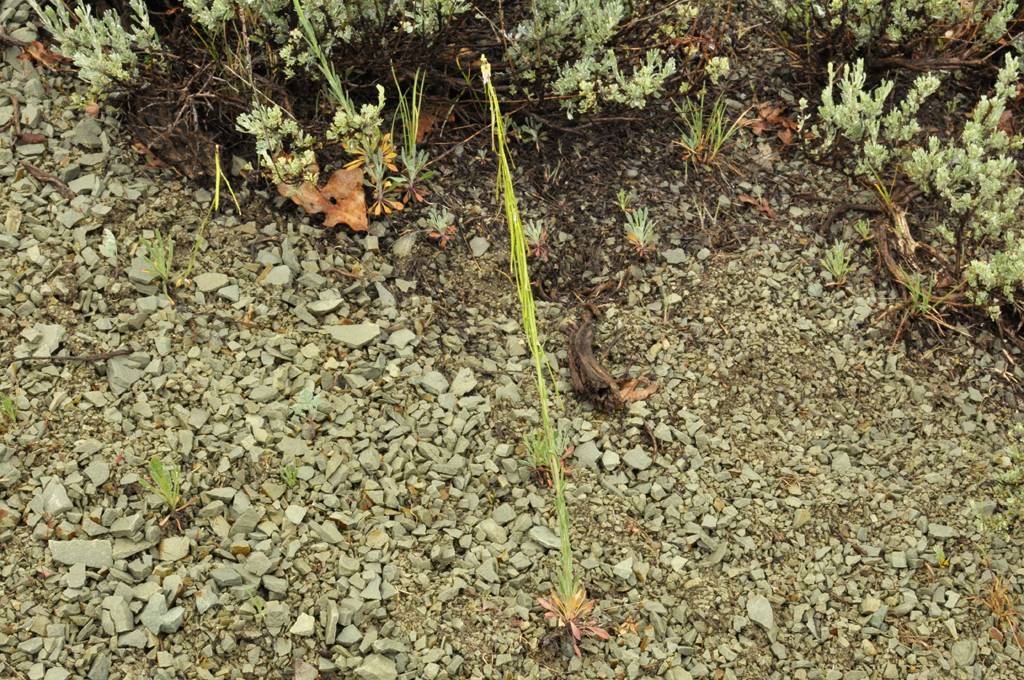
|
Family: Brassicaceae |
Perennials or, rarely, biennials; (sexual or apomictic, caudex usually present, rarely absent); not scapose; usually glabrous or pubescent, rarely hirsute or hispid, trichomes simple or branched, 2-14-rayed, sometimes dendritic, not stellate. Stems erect, ascending, or decumbent, unbranched or branched distally. Leaves basal and cauline; petiolate or sessile; basal rosulate or not, petiolate, blade margins usually entire or dentate, rarely lyrate-pinnatifid; cauline usually sessile, rarely shortly petiolate, blade (base sometimes auriculate or sagittate), margins entire or dentate. Racemes (sometimes paniculate), often elongated in fruit. Fruiting pedicels erect, ascending, divaricate, or reflexed (secund or not), slender. Flowers: sepals ovate or oblong, (lateral pair slightly saccate or not basally, margins membranous); petals usually white, pink, lavender, or purple, rarely yellowish, red, or magenta, spatulate or oblanceolate, (claw shorter than sepals or undifferentiated from blade, apex obtuse); stamens tetradynamous; filaments not dilated basally; anthers ovate or oblong, (apex obtuse), [pollen ellipsoid (sexual plants) or spheroid (apomictic)]; nectar glands confluent, subtending bases of stamens, lateral glands semi-annular or annular. Fruits usually sessile, rarely shortly stipitate, usually linear, rarely oblong or lanceolate, straight or falcate, smooth or torulose; valves (papery), each with obscure or prominent midvein, usually glabrous, rarely pubescent; replum (visible), rounded; septum complete, (membranous, veinless); ovules 8-250 per ovary; (style sometimes obsolete); stigma capitate. Seeds usually uniseriate or sub-biseriate, rarely biseriate, flattened, winged, not winged, or margined, oblong or orbicular; seed coat (usually smooth or minutely reticulate, rarely papillate), not mucilaginous when wetted; cotyledons accumbent. Boechera falcata (Turczaninow) Al-Shehbaz is known from eastern Asia (Russian Far East). Boechera often is treated as a synonym of Arabis (e.g., R. C. Rollins 1993; S. L. Welsh et al. 2003) but it has become clear that morphological similarities between these groups are due to evolutionary convergence, not shared ancestry. Molecular analyses by M. Koch et al. (2001) and T. Mitchell-Olds et al. (2005) revealed that Arabis and Boechera belong to distantly related clades of Brassicaceae that diverged some 19-25 million years ago. A new tribal classification of the family (I. A. Al-Shehbaz et al. 2006) places them in different tribes (Arabideae and Boechereae, respectively), reflecting their substantial molecular divergence. The taxonomic complexity of Arabis, in the broad sense, is legendary (R. C. Rollins 1941, 1993; G. A. Mulligan 1996). When the genus is split, most of the problematic taxa come to reside in Boechera. A rare confluence of hybridization, apomixis, and polyploidy makes this one of the most difficult genera in the North American flora. The sexual diploid species are relatively distinct from one another, but they hybridize wherever they come into contact. Through apomixis and polyploidy, the hybrids become stable, self-propagating lineages. Most of the hybrid derivatives in Boechera are triploids, but apomictic diploids are known as well. Thus, for any pair of sexual diploid species (e.g., AA and BB), this process can yield different intermediates, including AB apomicts and both possible apomictic triploids (AAB and ABB). The situation becomes even more challenging when a third sexual diploid enters the picture. To date, we have identified three taxa (B. divaricarpa, B. pinetorum, B. tularensis) that appear to be trigenomic triploids. Under these circumstances, even the most distinctive sexual diploid progenitors can become lost in a seemingly continuous range of morphological variability. In a genus characterized by the presence of polyploids and apomicts, it is essential to know which taxa represent the products of primary, divergent evolution (i.e., sexual diploids) and which are the result of secondary, reticulate evolution. Fortunately, a strong correlation between pollen morphology and ploidy level/reproductive mode facilitates the separation of sexual diploids from polyploids and apomicts in Boechera. Because of differences in meiosis, sexual diploids pr |



